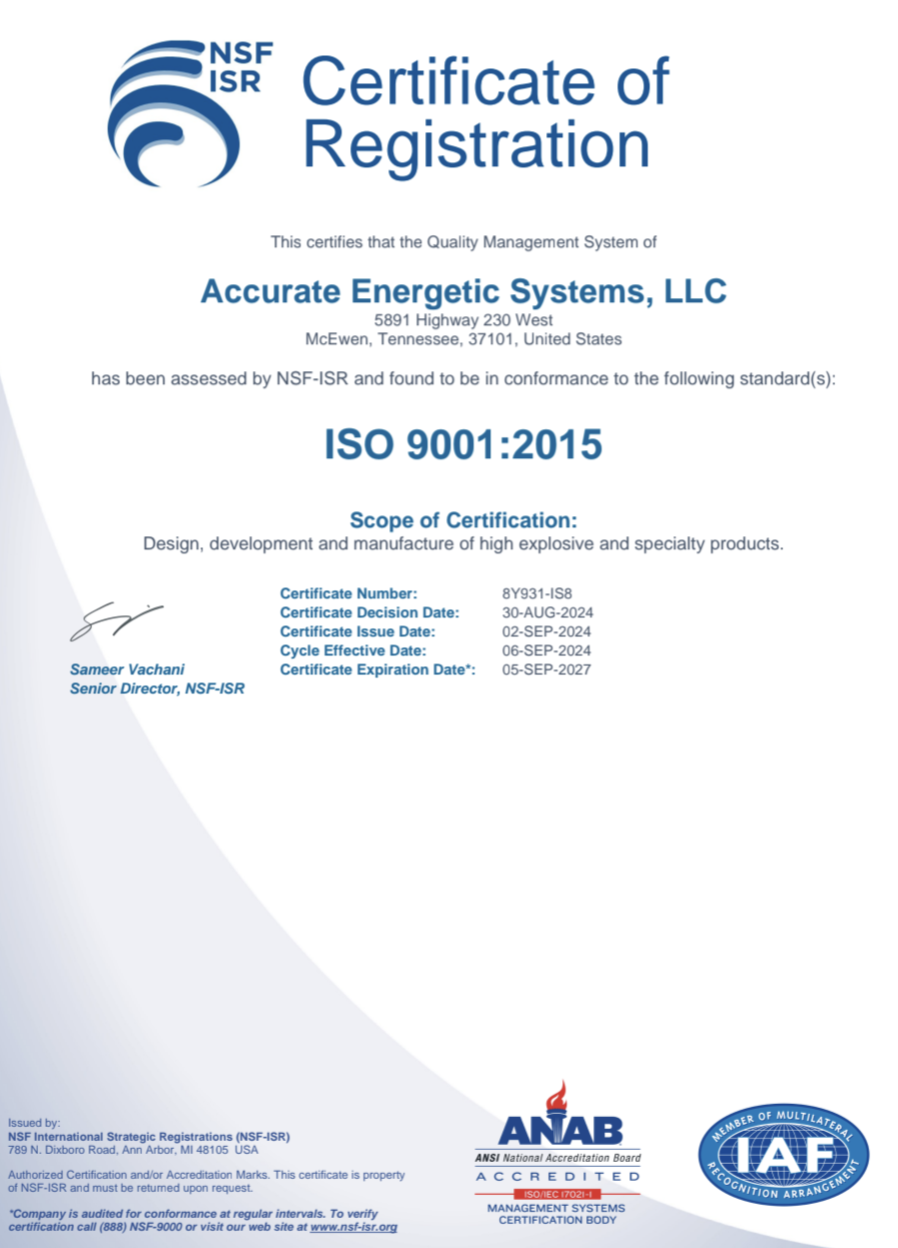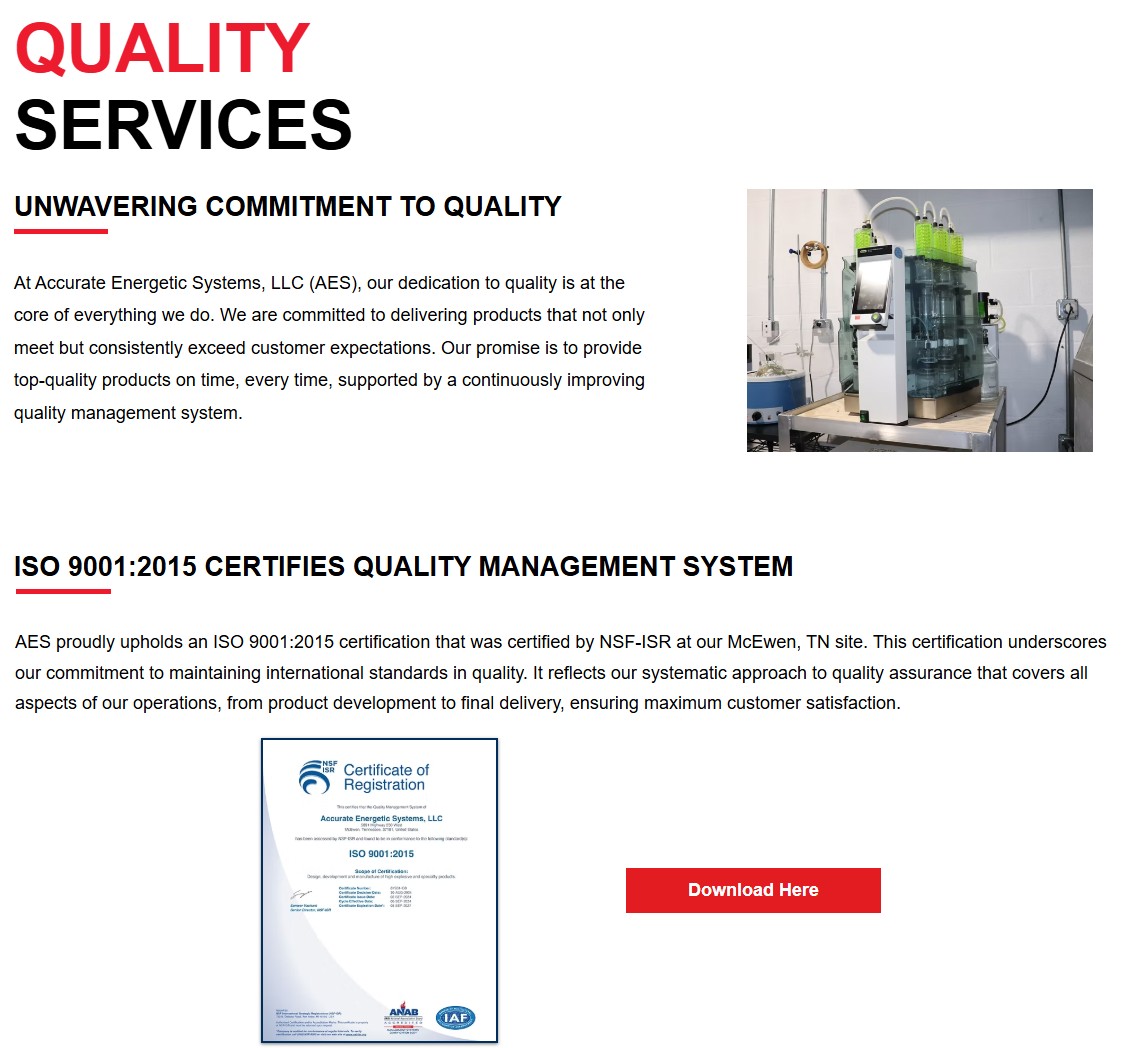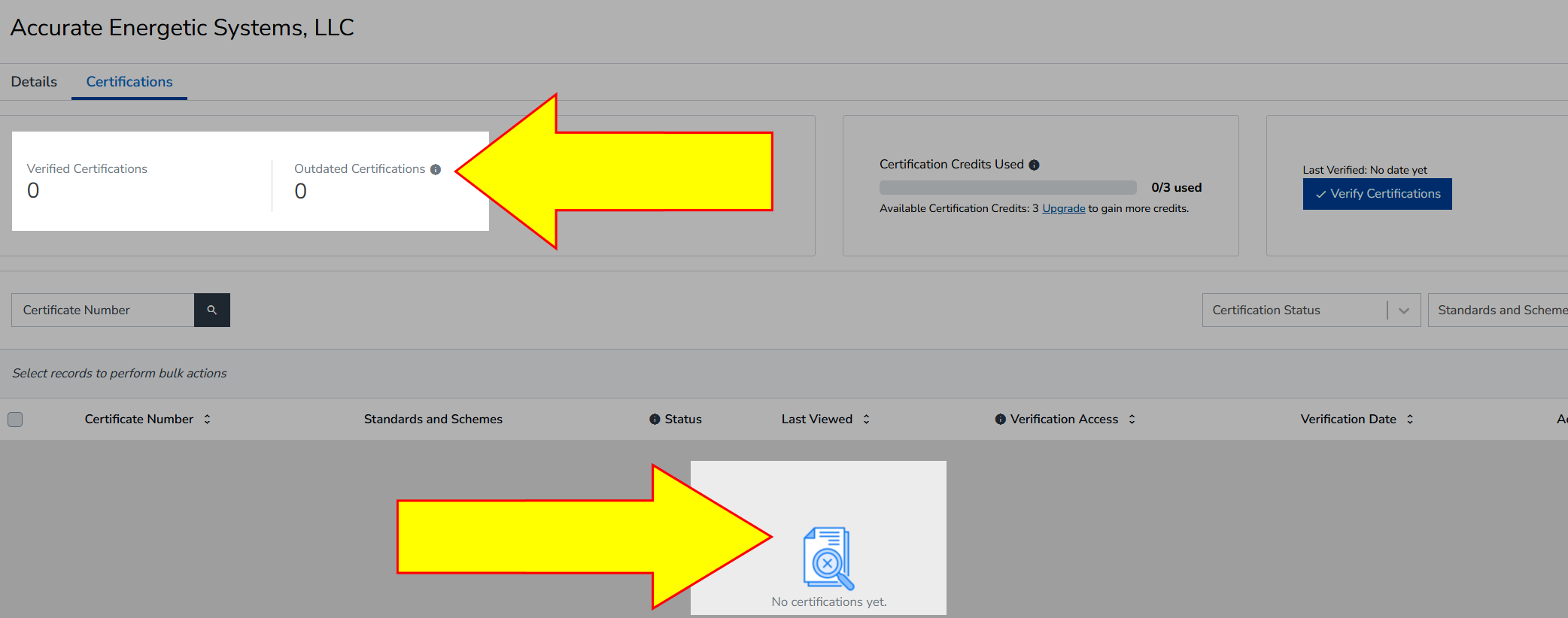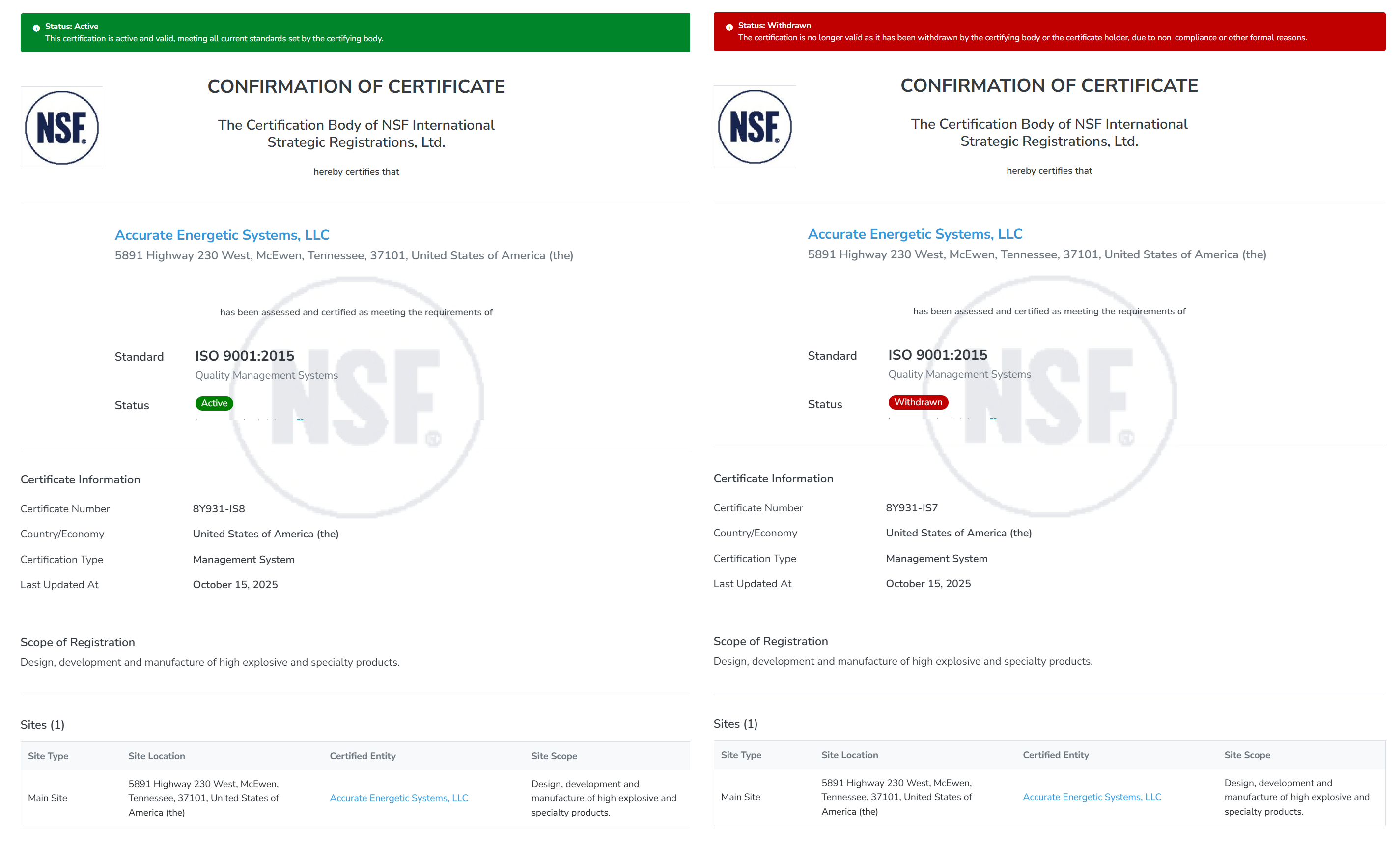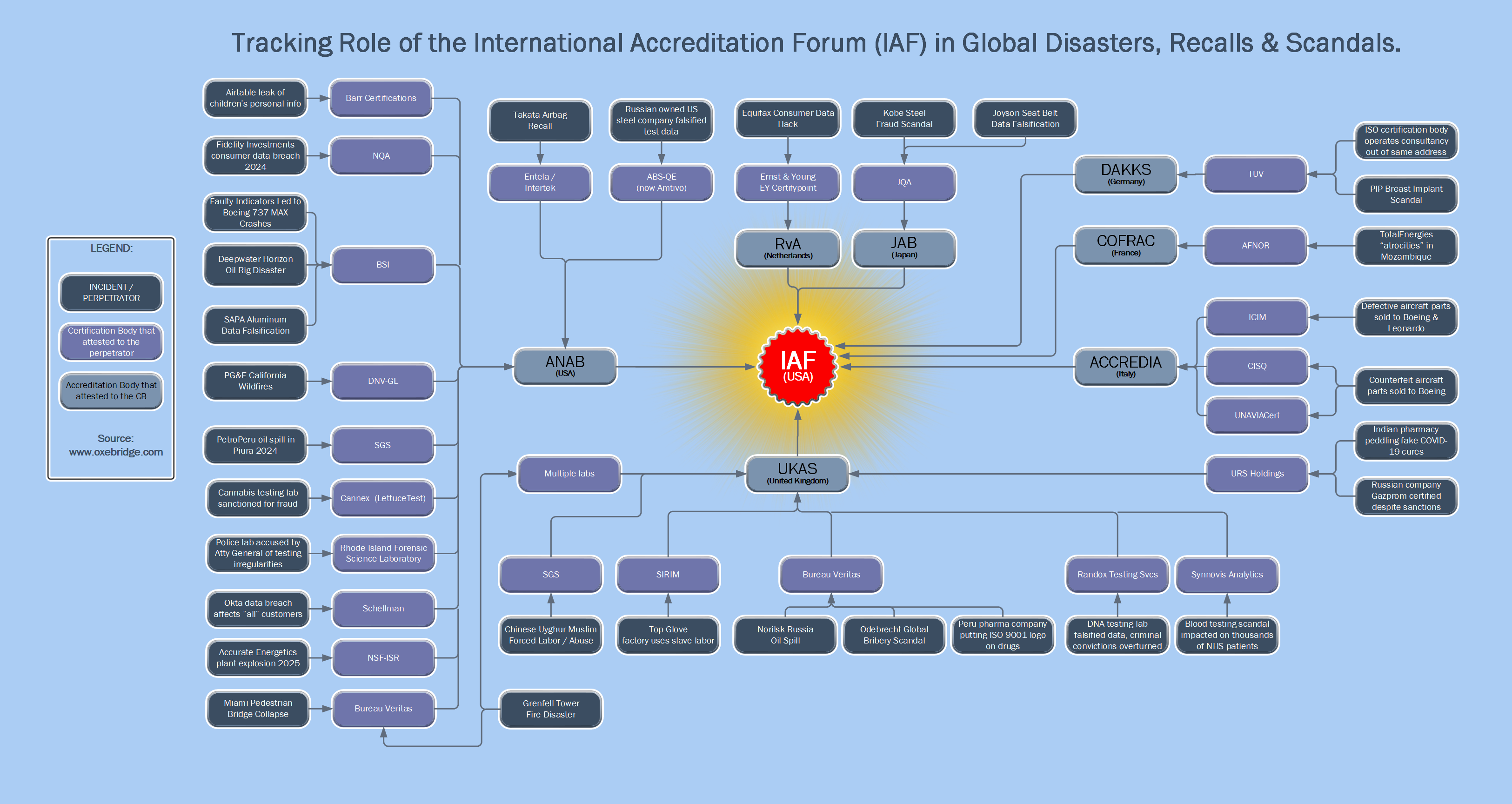Accurate Energetic Systems, a Tennessee-based explosives manufacturer, experienced a devastating explosion at its plant that killed 16 workers. The company holds ISO 9001 certification for explosives manufacturing, issued by NSF-ISR and accredited by ANAB.
According to the official AES website, the ISO 9001 certification included explosives handling activities.
Our operations are governed by an ISO 9001:2015 certified Quality Management System, ensuring excellence across all areas including contracting, engineering, production, environmental safety, occupational health, and security. AES’s facility rigorously adheres to the stringent security standards of DOD 5100.76-M, Appendix 2, and fulfills the safety protocols of DOD 4145.26-M, reflecting our commitment to maintaining the highest standards of safety and security.
The company’s LinkedIn profile also claims:
AES maintains an ISO 9001:2015 certified Quality Management System addressing all contracting, engineering, production, environmental, safety, occupational health, quality and security activities.
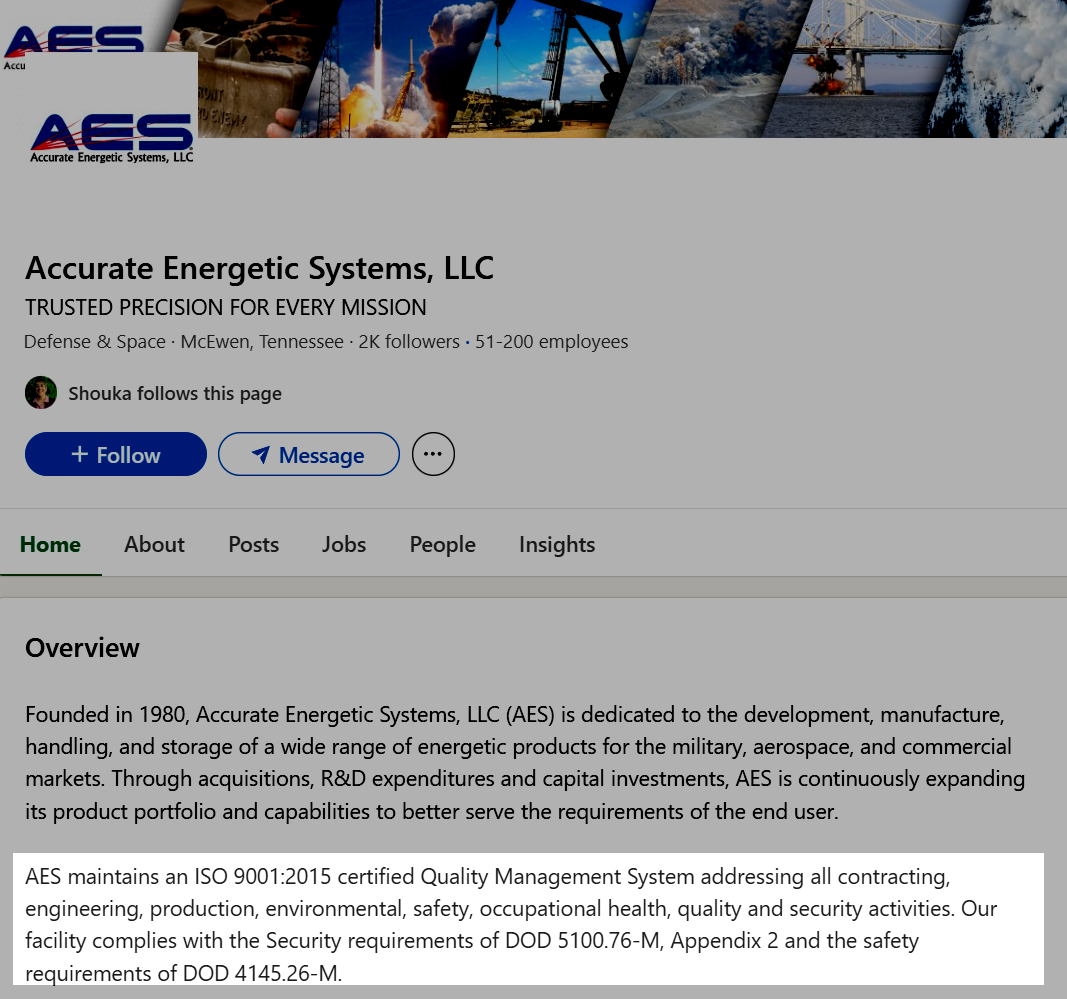
The deadly blast is not the first at this AES site. According to reporting by The Tennesseean, a similar accident caused the death of one worker in 2014:
On April 16, 2014, 23-year-old Rio Ammunition employee Rodney Edwards was installing a steel barrier fixture referred to as a “blast shield” between gunpowder hoppers, the lawsuit said. Documents also note the drill Edwards was using was not designed for use in an explosive environment. Surrounded by gunpowder, the lawsuit says a flash fire occurred and caused an explosion.
Rodney Edwards died. Another employee …, Joseph Clark, suffered “catastrophic injuries,” including the loss of an eye, two fingers and significant mental faculties, according to the lawsuit. [Another] employee …, Sheila Edwards, suffered severe injuries.
That news outlet also reported that there were multiple other violations reported at the AEs plant:
The Tennessee Occupational Safety and Health Administration conducted an inspection of Accurate Energetic Systems’ facility in McEwen in April 2019, after receiving reports of five serious violations. One, for example, was that employees were permitted to consume food or beverages in areas exposed to toxic materials.
Nevertheless, NSF-ISR saw fit to issue the ISO 9001 certificate to AES in August of 2024, apparently ignoring the company’s long history of violations. ISO 9001 includes requirements for handling of products under manufacture:

As a result, NSF-ISR was required to audit AES against this clause and verify its safe handling of its explosive products.
The certificate was signed by NSF-ISR executive Sameer Vachani and bears the ANAB accreditation mark. According to the NSF website, Vachani is an expert in “manufacturing” and “risk management.”
Mere hours after the initial reporting by Oxebridge, AES removed its ISO 9001 certification from the company website. The “Quality” page now resolves to a 404 error. The following screenshot shows the AES “Quality” page as of 10 October 2025, via the Internet Archive Wayback Machine:
Attempts to verify AES’s certifications on IAF CertSearch, the official database purported to contain all accredited ISO 9001 certificates, result in inconsistencies. Using a search via one method results in a page that shows no certifications at all for AES:
A search using another method on the site reports two certificates issued to AES, but both pertain to the same site and scope. It is not clear why NSF-ISR issued two separate ISO 9001 certificates for the same facility. One of those is now marked “WITHDRAWN” but the other remains active.
Prior reporting by Oxebridge suggested the certificates had been removed from IAF CertSearch, but that now appears incorrect. Instead, the different results appear to be a problem with how the CertSearch page presents the data.
The NSF-ISR website, meanwhile, has no listing for AES at all.
NSF-ISR’s accreditation body, ANAB, has repeatedly marketed its accreditation as “ensuring” quality, despite decades of deadly accidents, criminal fraud, and data falsification by companies holding certificates bearing its mark.
The International Accreditation Forum (IAF) has refused to take action against bodies like ANAB or NSF-ISR, going so far as to block any complaints that suggest fraud or malpractice on the part of the bodies, even in deadly cases such as this. To date, thousands have died at the hands of companies that won contracts on the basis of ISO certifications, which, according to the certification and accreditation bodies, guarantee quality and safety. Such scandals include the Grenfell Tower fire, the Boeing 737 MAX crashes, the Takata airbag scandal, the Equifax data hack, and the Deepwater Horizon oil rig disaster.
The graphic below provides a sample of incidents that might have been prevented had the various ISO oversight bodies performed their duties in accordance with the applicable accreditation standards and laws.
UPDATE 12 October 2025: The reporting was updated to include the final death toll of 16, as reported by ABC News. The original figure of 19 dead had been reported previously by news outlets.
UPDATE 14 October 2025: Updated to add a copy of AES’s ISO 9001 certificate, and to add reporting on the removal of all references to the certificate from the AES and NSF-ISR website, as well as IAF CertSearch. Added screenshots of evidence prior to deletion. Added updated IAF Disasters, Recalls, and Scandals graphic.\
UPDATE 15 October 2025: Updated with information on differing CertSearch results and retracted reporting that suggested the certs were removed from the database. Updated with screenshots showing one of two certificates issued to AES as being withdrawn.

